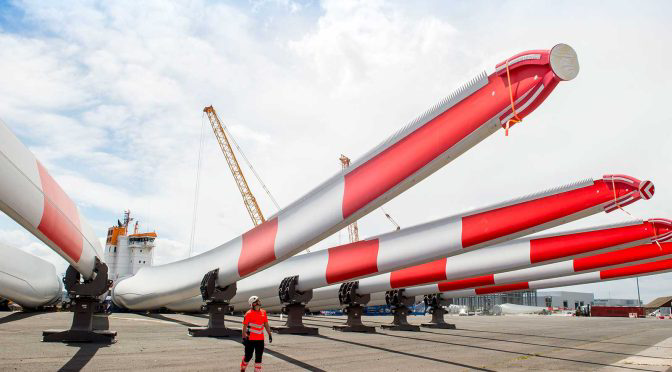Wind power has become a major player in the global renewable energy market, with wind turbines dotting landscapes around the world. As the number of wind turbines grows, the need for sustainable methods of disposing of their components also increases. One of the most important challenges in this regard is the elimination of wind turbine blades, which are normally made of composite materials that are difficult to recycle. However, recent advances in wind turbine blade recycling technology offer promising solutions to this problem, turning potential landfill waste into valuable resources.
Wind turbine blades are primarily made of fiberglass and other composite materials, which provide the strength and flexibility necessary for efficient power generation. These materials, however, are not biodegradable and can take hundreds of years to break down in a landfill. Additionally, the large size of the shovels, which can be up to 300 feet long, make transportation and disposal a logistical challenge. As a result, many decommissioned blades ended up in landfills, contributing to the growing global waste problem.
Recognizing the need for a more sustainable solution, researchers and industry experts have been working tirelessly to develop innovative methods for recycling wind turbine blades. One of these methods involves breaking down composite materials into their constituent parts, which can then be reused for various applications. For example, fiberglass can be ground into fine particles and used as a filler in the production of new composite materials, such as those used in the automotive and construction industries. This not only diverts waste from landfills, but also reduces the need for virgin materials, further reducing the environmental impact of these industries.
Another promising development in recycling wind turbine blades is the use of pyrolysis, a process that involves heating the blades in the absence of oxygen to break down composite materials into their basic components. This process results in the production of valuable materials, such as glass fibers and carbon fibers, which can be used in a wide range of applications, including the manufacture of new wind turbine blades. In addition, the process generates energy in the form of heat and gas, which can be harnessed for various purposes, further improving the sustainability of this recycling method.
These advances in recycling wind turbine blades not only help address the growing problem of waste, but also create new economic opportunities. The global market for wind turbine blades is expected to reach $43.4 billion by 2025, and the development of efficient recycling methods will be crucial to support this growth. The recycling process itself generates new jobs and contributes to the growth of the circular economy, whose objective is to minimize waste and make the most of available resources.
In addition, the reuse of materials from wind turbine blades has the potential to save lives. For example, researchers at the University of Tennessee have developed a method for using recycled materials from wind turbine blades to create low-cost, durable housing for areas affected by disasters. These innovative structures can provide much-needed shelter for people affected by natural disasters such as hurricanes and earthquakes, demonstrating the far-reaching benefits of recycling wind turbine blades.
In conclusion, the development of effective wind turbine blade recycling methods is not only essential to address the environmental challenges associated with wind power, but also has the potential to create new economic opportunities and improve the lives of those who need it. As the global demand for renewable energy continues to grow, it is critical that we invest in sustainable solutions that minimize waste and maximize the benefits of this vital resource.
